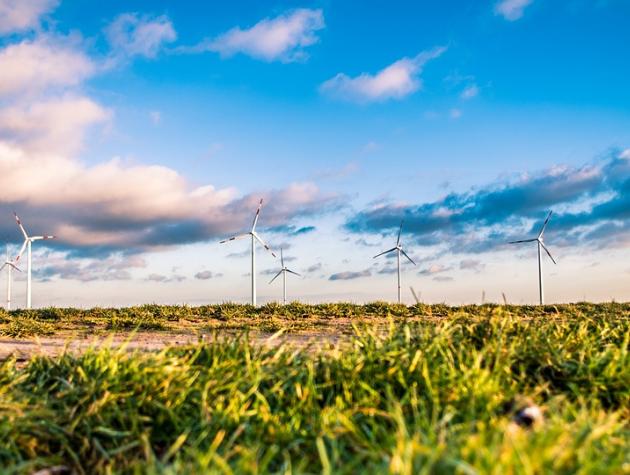How to Eat an Elephant: a new ‘Corporate’ climate litigation trend
Lisa Benjamin assesses a new ‘corporate’ trend in climate litigation, with both successful and unsuccessful cases being launched in earnest against carbon major companies.
There has been an explosion of climate litigation in the past decade. While the majority of this litigation continues to be initiated against Governments as defendants, a more recent trend of ‘corporate’ climate litigation has begun in earnest, with litigation launched between 2015-2017 specifically against carbon major companies in a variety of jurisdictions worldwide. As Michael Burger notes, its messy out there for carbon majors. These suits include both private litigants as well as Government entities as plaintiffs, with carbon major companies as defendants. Initial tort-based efforts to hold these companies liable for climate damages several years ago were unsuccessful, particularly in the US, largely due to difficulties in proving causation and the federal displacement doctrine.
This doctrine was established in the climate arena by the American Electric Power v Massachusetts Supreme Court case in 2011. The doctrine essentially establishes that where federal legislation such as the Clean Air Act has been enacted, the judiciary are reticent to adjudicate on the issue of climate change. Despite these initial failings, improvements in climate attribution science, combined with evolving industry norms on the materiality of climate risk, have opened up new pluralistic legal avenues, and inspired a ‘corporate trend’ in climate litigation.
Even if unsuccessful in the round, this corporate litigation trend will have indirect effects. The cases attempt to stretch legal concepts such as tort, causation and proximity, and serve as an expository tool, laying bear the role of these companies in the evolving climate crisis. This in turn elevates the issue in the public consciousness as well as in the minds of directors and other fiduciaries. At the very least, the Courts have demonstrated a new willingness to engage with and consider climate science.
A suite of litigation in the United States against carbon major companies, particularly in California, has attracted a lot of media attention. These series of cases, occurring in different levels of courts and US states, for the first time sees government entities suing corporations for contributions towards adaptation costs. On 25th June 2018, one of the first cases brought by the cities of Oakland and San Francisco against the five largest, private carbon major companies was dismissed on a numerous grounds, including the federal displacement doctrine, foreign affairs powers to regulate a transnational issue, and that the issue was largely a political one. Judge Alsop in this case famously conducted a climate tutorial, and his understanding of climate science is reflected in the judgment which clearly states that the case is not about climate science but about the law, “whether these producers of fossil fuels should pay for anticipated harm that will eventually flow from a rise in sea level” (p. 6). Ultimately his answer was no, based on a number of factors including the contribution of these industries to global development.
This ‘corporate’ directional shift in climate litigation is exemplified by a ground breaking decision in Germany in 2017, of Lliuya v RWE, which held, at least in principle, that a company can be liable for climate impacts. Saúl Luciano Lliuya is a Peruvian farmer and mountain guide who sued a German utility company for their proportionate contribution to adaptation costs to protect his village from glacial outbursts and flooding. Basing his case on Richard Heede’s historic paper which traces the contributions of carbon major companies to climate change, Mr Lliuya asked for damages commensurate to Heede’s estimate of RWE’s historical contribution to global emissions of 0.47% - Mr Lliuya consequentially requested 0.47% of the total costs of adaptation for his village from RWE, and the court accepted the arguments of contributory or partial causation by one company to global climate change. The evidentiary phase of the case is to follow.
A parallel track of climate litigation based on company law and fiduciary duties in the past year has been less successfulbased on pension funds invested in ExxonMobil. However, recent activity targeting carbon major companies, including fraud-based investigations by Attorney Generals in the US, are opening pluralistic legal avenues which demonstrate creative use of legal tools to establish causal and proximate liability by these companies for climate-induced damages. One potential hurdle which has not been considered yet in these cases is the issue of holding a parent company liable for emissions of its subsidiaries, and recent English cases demonstrate how difficult this hurdle can be to overcome for tort-based actions.
However, even if this recent spate of cases are ultimately unsuccessful, litigation against carbon major entities is likely to increase in the future as climate attribution science continues to improve, climate-induced damages continue to mount, and as Osofsky and Peel note, regulatory impasses continue. These suits may have an indirect effect of increasing thresholds of duties of due consideration for directors and other fiduciaries. Fiduciary and directorial duties are likely to be coloured by this corporate litigation trend, and evolving industry norms on the thresholds for the materiality of climate risk, and disclosure of climate change as a material financial consideration, are therefore likely to increase. The role of litigation in transnational law is particularly pertinent for transnational entities such as carbon major companies, which have legal entities in multiple jurisdictions where climate-induced damage can occur. Litigation can stretch and inspire the evolution of legal concepts, with courts engaging in a global conversation over the difficult issues of causation and liability. As such, it is unlikely that litigation against these companies will stop anytime soon.
It is important to note that companies themselves are not passive players in this arena and have been active in litigation efforts, acting as plaintiffs in a number of suits. It is also important to note that some companies have been progressive and proactive in the climate change area, and so not all carbon major companies can be classed as ‘laggards’. However, a small but growing subset of cases demonstrate a corporate trend in litigation against carbon major companies, which at the very least will have indirect effects for these companies and their risk profiles, as well as for directorial and fiduciary duties generally.







